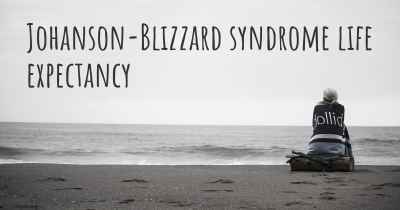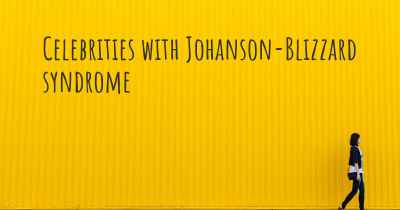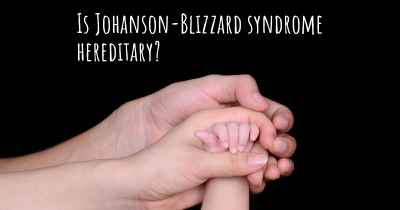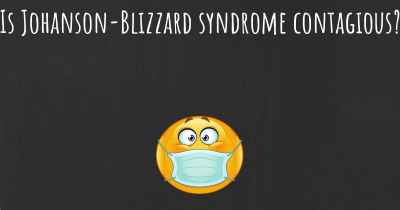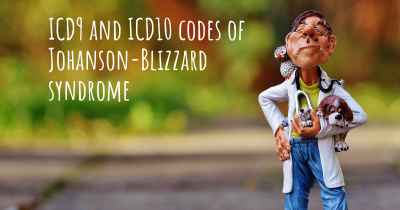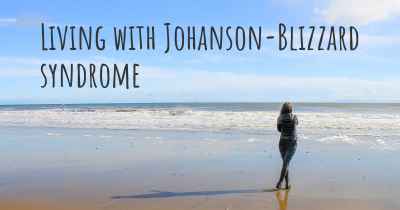What is the history of Johanson-Blizzard syndrome?
When was Johanson-Blizzard syndrome discovered? What is the story of this discovery? Was it coincidence or not?
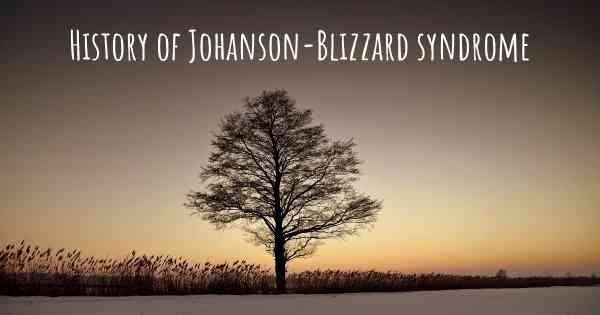
Johanson-Blizzard syndrome:
Johanson-Blizzard syndrome (JBS) is a rare genetic disorder that affects multiple systems in the body. It was first described in 1971 by Swedish pediatrician Ann-Britt Johanson and American pediatrician Robert Blizzard. JBS is characterized by a variety of physical and developmental abnormalities, including pancreatic insufficiency, intellectual disability, hearing loss, and distinctive facial features.
Discovery and Early Cases:
The first reported cases of JBS were in two unrelated children, a boy and a girl, who were seen by Dr. Johanson and Dr. Blizzard at their respective clinics. Both children presented with similar symptoms, including failure to thrive, developmental delay, and unusual facial features. The doctors recognized the similarities between the two cases and collaborated to publish their findings, naming the condition Johanson-Blizzard syndrome.
Clinical Features:
JBS is characterized by a range of physical and developmental abnormalities. One of the most prominent features is pancreatic insufficiency, which leads to malabsorption and poor weight gain. This often requires lifelong enzyme replacement therapy to aid digestion. Individuals with JBS may also have intellectual disability, ranging from mild to severe, and may experience delays in reaching developmental milestones.
Hearing loss is another common feature of JBS, which can be conductive, sensorineural, or mixed. The distinctive facial features associated with JBS include a small head (microcephaly), a broad nasal bridge, widely spaced eyes (hypertelorism), and a small jaw (micrognathia). These facial characteristics can vary in severity among affected individuals.
Genetics and Inheritance:
JBS is caused by mutations in the UBR1 gene, which is located on chromosome 15. This gene provides instructions for producing a protein involved in the degradation and recycling of other proteins within cells. Mutations in the UBR1 gene disrupt this protein's function, leading to the characteristic features of JBS.
JBS is inherited in an autosomal recessive manner, which means that an individual must inherit two copies of the mutated gene (one from each parent) to develop the syndrome. If both parents are carriers of a single mutated gene, they have a 25% chance of having an affected child with each pregnancy.
Management and Prognosis:
There is currently no cure for JBS, so treatment focuses on managing the symptoms and improving quality of life. Early intervention programs, including physical therapy, speech therapy, and special education, can help individuals with JBS reach their full potential.
Due to the pancreatic insufficiency associated with JBS, individuals require lifelong enzyme replacement therapy to aid digestion and ensure proper nutrition. Regular monitoring of growth, nutritional status, and pancreatic function is essential.
The prognosis for individuals with JBS varies depending on the severity of symptoms and associated complications. Some individuals may have a relatively mild form of the syndrome and lead relatively independent lives, while others may have more significant intellectual and physical disabilities requiring ongoing support and care.
Research and Future Directions:
As JBS is a rare disorder, research on the syndrome is limited. However, ongoing studies aim to further understand the underlying genetic mechanisms and identify potential therapeutic targets. Advances in genetic testing and molecular techniques have facilitated the diagnosis of JBS and improved genetic counseling for affected families.
Collaboration among researchers, clinicians, and affected families is crucial for advancing knowledge about JBS and developing targeted interventions. Increased awareness and support for rare genetic disorders like JBS can lead to improved outcomes and quality of life for affected individuals and their families.
